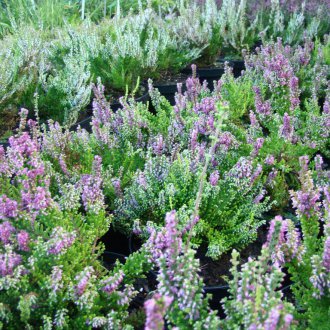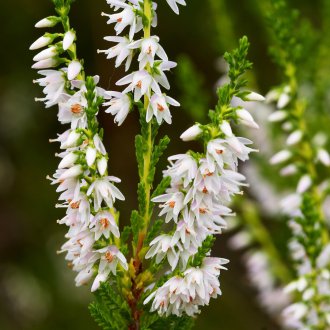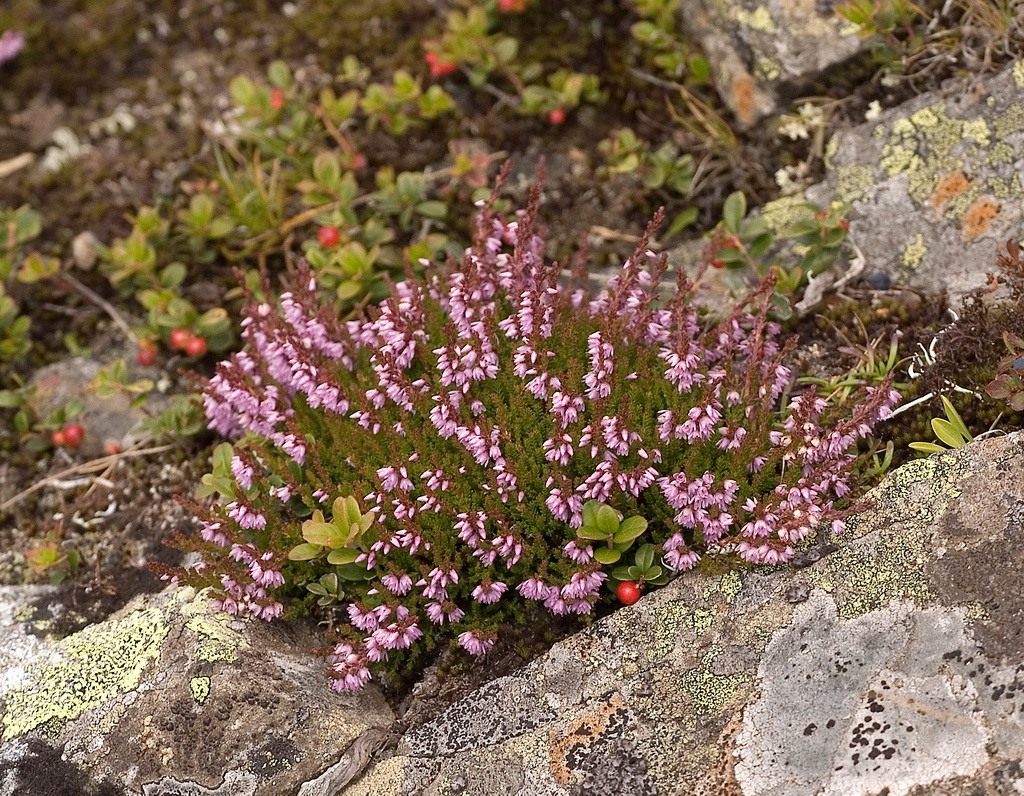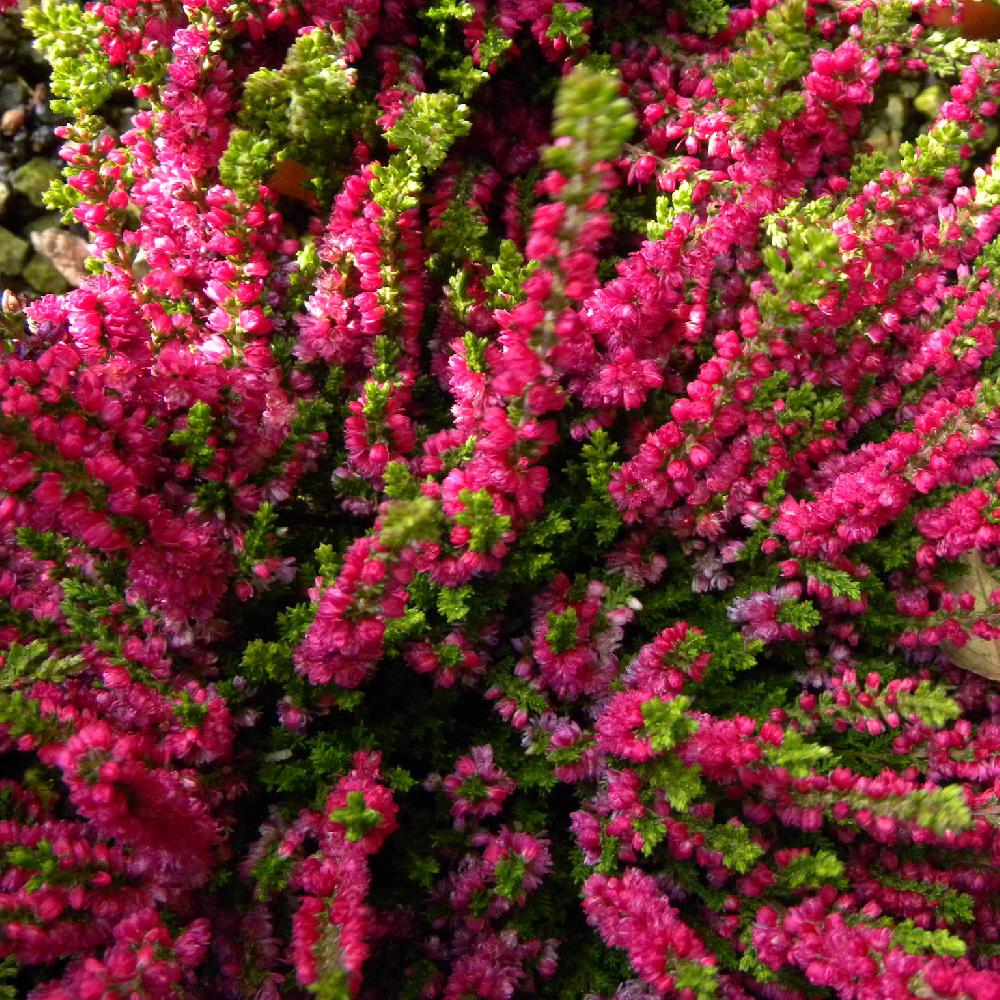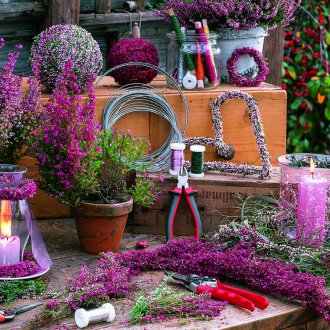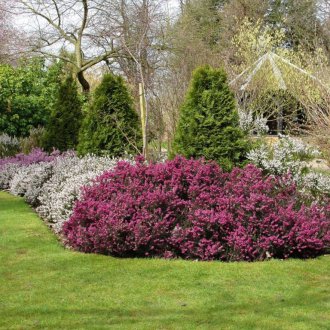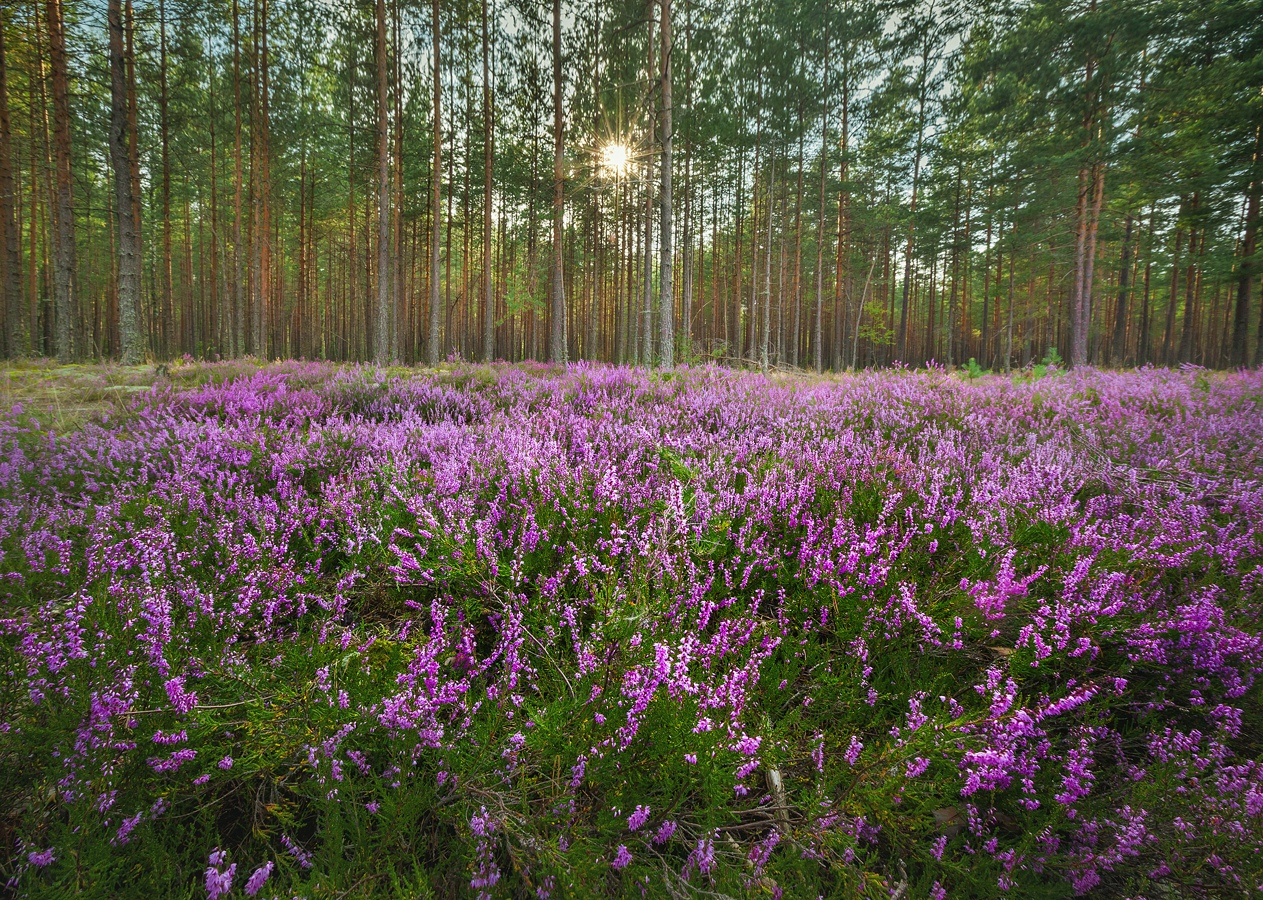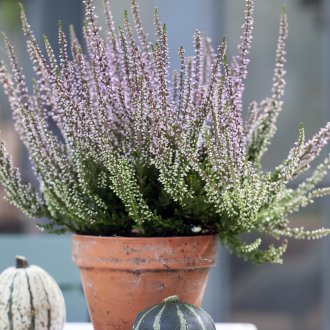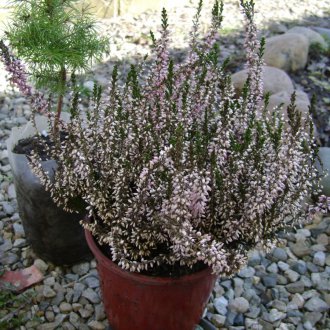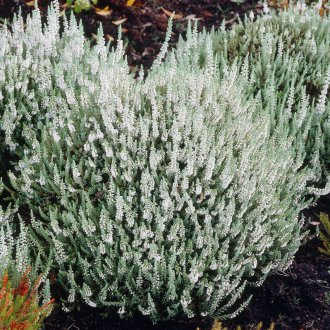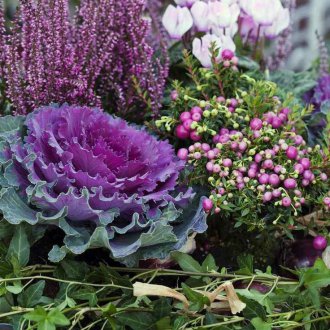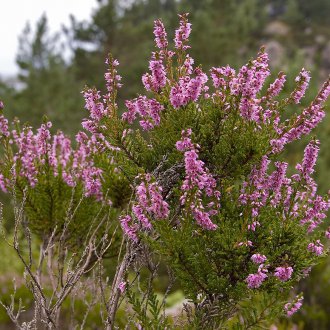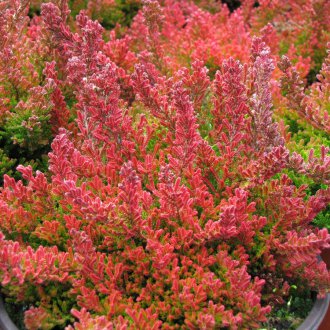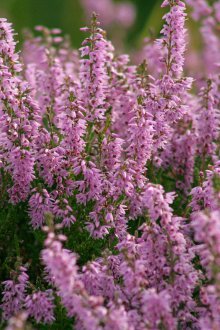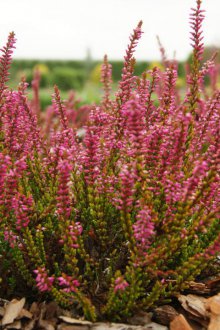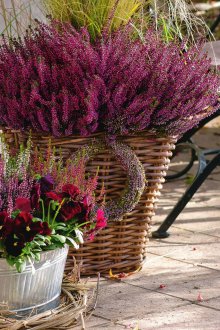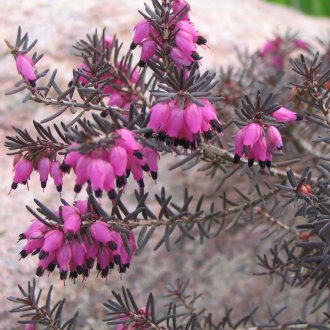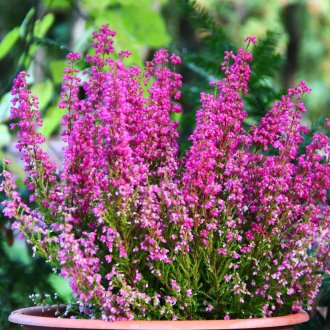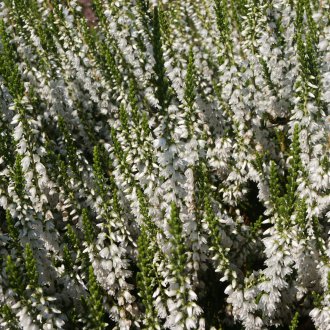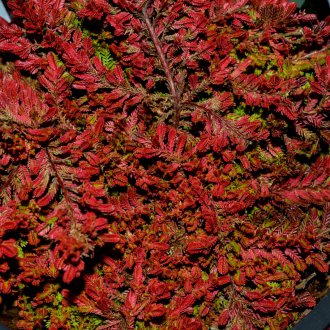Heather: species, planting, care and breeding in a garden (24 photos)
The word "heather" itself is associated with the wastelands of England, Stevenson's ballad and dancing fairies, who can captivate a man for a hundred years in their underground halls. Heather in home design is not immediately remembered: despite its unpretentiousness in care, frost resistance and beauty, it is not too common in central Russia, which is a huge omission.
Appearance and varieties of heather
There is only one species in the genus - common heather, but its subspecies are numerous and diverse. In general, heather is a low bush, without a clearly defined main trunk, reaching a height of 70 cm, with trihedral leaves, the color of which varies from green to golden. In summer, it blooms with small flowers collected in one-sided brushes - each flower vaguely resembles a bell and is painted in shades of pink or purple. Common heather is a honey plant. The honey obtained from it has its own taste and may seem unusual to a person who has never tasted it before.
Varieties of heather are usually divided according to the color of the leaves. With green leaves and pink flowers: mazurka, happy, duckness, ross, hatton. The most popular of them:
- allegro - retains green throughout the year, reaches a height of 60 cm, blooms with brilliant red flowers, does not require shelter in winter, only if we are not talking about very young plants;
- Carmen - the most popular of Europe's varieties, reaches a height of 40 cm, blooms with purple flowers, can survive the winter without shelter, but in especially cold years and snowless winters it is better to play it safe.
With green leaves and white flowers: long white, alba jay, white lawn. The most popular of them:
- alba - bright green leaves, height up to 40 cm, rounded crown, white flowers;
- alexander - dark green leaves, height up to 30 cm, flowers are creamy, but by the end of summer they change color and turn pink first and then dark red.
With silver leaves: annmarie, yan dekker, velvet fashion. The most popular of them:
- silver night (the name translates as "silver night") - 30 cm tall, fluffy, gray and silver leaves that change color in the winter to burgundy, lilac or light purple flowers;
- Peter Sparks - English variety, height 30 cm, leaves are dark green, turn gray-green by winter, flowers are dark pink in color, fluffy.
With golden leaves - Arran Gold, Cottswood Gold, Gold Haze, Blazeway. The most popular of them:
- Andrew Proudley - a very low shrub, up to 15 cm, leaves are orange, yellow at the ends, become closer to bronze in winter, pink flowers;
- boskup - Dutch variety, 40 cm high, yellow-green leaves that turn red with a honey tint by winter, pink-purple flowers, short inflorescences.
Separately, two more groups stand out, with terry colors: red feyvorit, dark star, Joana sparks. The most popular of them:
- otem glow - height 30 cm, flowers are light purple, double, short brushes;
- monica - height 55 cm, flowers of a pinkish-red hue, dark green leaves change color by winter and turn grayish.
With flowers that are not fully revealed - Romina, Minima, Fritz Kircher. The most popular of them:
- marlin - German variety, 30 cm, buds dark purple or dark purple;
- David Ison - 20 cm, flowers of dark purple color, brushes are short, dense.
Types of heather should be chosen meticulously - the appearance, resistance to frost, and basic habits depend on the subspecies. Having successfully selected shades, you can turn ordinary heather into a real decoration of the site, and choosing it wrong, you can get a very unfortunate version of the landscape and the need to start all over again.
Landing Nuances
Before undertaking the cultivation of heather, you need to choose a suitable place. And since any heather is a perennial heather who does not like transplants, you need to take up the matter wisely, taking into account the following factors:
- Lighting. Heather is used to wastelands, where there is no place to hide from the sun, because a shady place is not suitable for him. The minimum level of illumination is 50 percent, otherwise no care for heather will help to keep it healthy.
- Water level. Common heather is used to soils with good drainage, in which water does not have a chance to linger strongly. The hills are ideal for him, from which any streams of water flow quickly. If you plant it in a lowland, the plant will quickly begin to rot and wither.
- The soil. Heather prefers acidic soils, because if the garden was treated with lime or dolomite flour, he could not grow in it.
- Neighbors. Heather coexists well with all plants that prefer acidic soils and do not cast a shadow on it, because the issue of neighborhood is rather decorative than practical, but young seedlings go well with thuja, juniper, rhododendron.
When a place is chosen, heather planting can begin. There are two options: growing from seeds or planting purchased seedlings. Technologies differ only in the fact that in the first version, seedlings are actually grown independently.
It is important to act consistently - growing heather requires accuracy:
- Seed germination. Put the heather seeds in the dishes in an even thin layer, sprinkle abundantly from the spray bottle, cover with glass and put in a warm place.
- Planting seeds. The substrate is mixed from peat with sand, wood bark and earth from coniferous forest in a ratio of 3: 1: 1. After 2 weeks, the seeds are spread on a substrate, sprinkled a little on top, sprayed from a spray bottle and covered with glass, creating a greenhouse effect. From time to time, the seeds are sprayed with water so that the substrate does not dry out.
- Hardening. When the first sprouts appear, the hardening process begins - the glass rises for a while for ventilation. Every day, the airing time increases, after a container with sprouts they begin to take out to the street for getting used to.
- Seating. When the sprouts begin to interfere with each other, they are planted in different pots.
- Continuation of hardening. Heather should be taken out at partial shade and left there. When the cooling starts, you need to remove the sprouts in a cool room. It will be possible to plant heather in the spring, in the second year of his life.
The planting technology of heather grown at home does not differ from the planting of seedlings - both should be done carefully:
- Site preparation. Remove the topsoil from the site, fill it with peat mixed with sawdust, soil from coniferous forest and sulfur. Drown, pour water mixed with apple cider vinegar (no more than a third of a glass per bucket).
- Pit preparation. Dig holes, make drainage from broken brick, sprinkle with a substrate, add a little bone meal.
- Disembarkation. Heather is planted in summer or spring, carefully lowered into a hole to the depth of the roots, and covered with soil. Abundantly watered. Mulch with gravel, peat, spruce branches - any material that keeps the soil moist.
It is not so difficult to grow heather home - all its varieties are unpretentious, do not require specific care. If everything was correct, the plot in the country quickly covered with flowering heather bushes. It remains only to provide them with adequate care.
The nuances of care
In order for domestic heather to grow well and luxuriantly, for the reproduction of heather to be possible, and for it to truly decorate the site, you need to follow a few simple rules:
- Watering. It should be relatively frequent - once a week. You can add acid to water. It is important that the water does not fall on the leaves of heather - only at the very root.
- Pruning. Held every spring, when heather home reaches three years of age. Cut excess branches below the inflorescence carefully so as not to damage the entire plant. As a result, the heather bush becomes more magnificent.
- Fertilizer. Every spring is also held after the crown has been trimmed. A universal acidic fertilizer is used, which is diluted in water and poured under the roots on already moist soil (this is important, otherwise there is a chance to burn garden heather). You can use fertilizers for azaleas and rhododendrons, only diluted, because they are too concentrated for heather.
- Wintering. Heather is a plant that tolerates cold well, but most of its varieties still need to be taken care of in the fall. Cover the roots with spruce branches or warm peat, overlay the bush itself with fluffy pine branches in the shape of a hut. It is recommended to remove it not when the snow is melting, but closer to mid-April, otherwise it is likely that the delicate leaves of heather will be charred under the sun.
- Treatment. If heather is looked after correctly, it is almost not ill, but if this still happened, you should contact knowledgeable people or use special tools. And if the leaves are covered with a gray coating - this means gray rot due to excess moisture in the soil. It is necessary to reduce watering or transplant heather to a drier place.
In addition to planting and care in the open ground, reproduction is also feasible. Like any plant, heather propagates vegetatively. There is one easiest way - air layering. You may not even have to wonder how to do it right, how to propagate heather - the technology is so simple that it is impossible to make a mistake. You need to take one of the branches, bend it to the ground and fix it. Sprinkle with earth, water, fertilize, like a separate bush. At a certain point, the branch will take root and take root - then you can separate it from the mother plant and transplant it.
Planting and care of heather is an interesting activity, which also allows you to decorate the site and enjoy the process. After all, what could be nicer than to grow a little of real beauty with your own hands?
